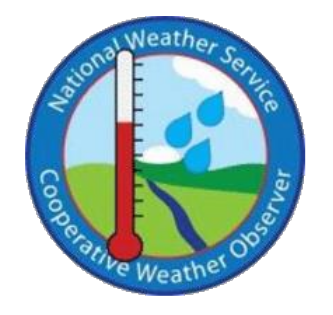Weather observers who make up the National Weather Service
Cooperative Observing Program are a core of volunteers numbering over
10,600. Their history extends back long before there was a National
Weather Service. Of these, about 5,000 make up the "climate" network
while the remainder of the network supports hydrology or meteorology.
This network of volunteer weather watchers has become an American
institution. The program and its history of success continue to arouse the
envy of other countries around the globe. It has been acclaimed as the
most cost-effective weather data collection network in the world..
Today, the Cooperative Observer Network operates basically as it did
the first year of its inception over 100 years ago. Cooperative WeatherStations, scattered over all 50 states, Puerto Rico, and the Virgin Islands,
take weather observations seven days a week throughout the year.
Cooperative Weather Observers provide a myriad of vital information
for their local areas.
It is estimated that Cooperative Weather Observers donate over a million
hours of their time each year, netting the public more per dollar
expended than any other government service in the world. Their data
becomes more valuable with time and forms the cornerstone of the
Nation's climatological history.
Cooperative Weather Observers come from all walks of life. Farmers,
teachers, lawyers, doctors, housewives, and retirees are all among those
individuals contributing to the program. Individual observers are usually
long-time local residents of the area. This provides longevity and
continuity of data. In addition to private citizens, many local, state, and
federal government offices actively participate in the program. Power
plants, water and pollution control plants, schools and universities, and
members of the media also provide Cooperative Weather observations.
Observers are recruited in predetermined locations to fill a specific data
need. This need may be to define the climate of an area, to obtain data
for NWS hydrologic operations, augment data from the Automated
Surface Observing System (ASOS), or provide credible ground truth
data.
As a cost-free benefit to Academy School District 20 and the
surrounding community, the Cooperative Weather Observer for the
National Weather Service Cooperative Station at Cumbre Vista –
Colorado Springs 10N has established a unique, high-technology
weather station at Legacy Peak Elementary School and Modern
Learning Center. Among the Nation’s public schools, the weather station
at Legacy Peak is unrivaled anywhere in the United States.


